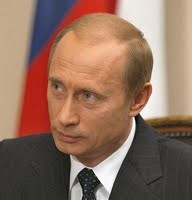Russia is on the hunt again, determined to engulf another part of Ukraine and possibly more. Moscow’s complex, multidimensional offensive uses intimidation, misinformation and any organization or group that can serve its interests. As Ukraine teeters on the edge of bankruptcy, Russian President Vladimir Putin is tightening the economic screws by threatening to require advance payment for essential natural gas shipments. Pro-Russian separatists have launched demonstrations across eastern Ukraine, attempting to goad the government into an overreaction that could give Moscow an alibi for open invasion. Meanwhile, Russian and pro-Russian troops have seized government buildings and police stations, engaging in firefights with Ukrainian security forces. Just across the border sit 40,000 Russian troops, sending an ominous signal to the Ukrainians. For the beleaguered Ukrainian government and people, pressure is coming in many ways and from many directions. And that is exactly what Putin intends.
Washington seems befuddled by all this, responding with vague warnings that bad things might happen if Russia takes further unspecified actions. While Putin operates in multiple complex, parallel dimensions, the American response is linear, limited and rigid. Tragically, the United States doesn’t seem to grasp the logic of Russian actions even though they embody an emerging form of strategy that security experts have debated and discussed for more than a decade: unrestricted warfare.
The phrase “unrestricted warfare” first drew attention with the publication of a 1999 academic paper written by two Chinese colonels, Qiao Liang and Wang Xiangsui. It is based on the belief that there are no longer limitations or rules in warfare—anything that contributes to victory is at least worth consideration. Unrestricted warfare involves diverse, simultaneous asymmetric attacks on an adversary’s social, economic and political systems. It ignores and transcends the “boundaries between the battlefield and what is not the battlefield, between what is a weapon and what is not, between soldier and noncombatant, between state and nonstate or suprastate.” Essentially, it is a way for the weaker party in a conflict to even the odds.

